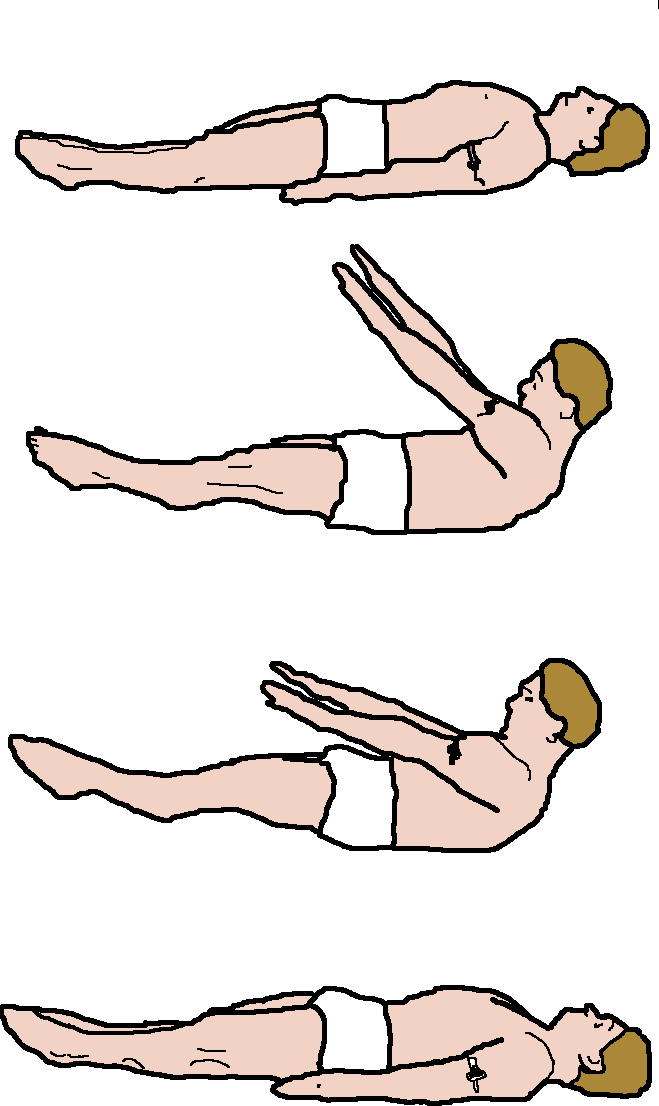|
|
|---|
Book recommendations
Serious students study
Return to Life
Tips on posture and muscle tensioning - "Pilates Contrology".
Pilates Hundred, Pose 1:-
- Zip and hollow in preparation, and maintain zip and hollow throughout.
Note that the toes are pointing away.
- Anchor your scapulas, and keep them gently anchored throughout.
- Tuck your chin and lift your head and shoulder blades off the mat.
Make sure that you are looking down at your belly.
- Raise your straight legs just 2" off the floor.
- Raise arms to the position shown in pose 2.
Pilates Hundred, Poses 2 and 3:-
Beat your arms up and down just 6 to 8 inches (elbows locked)-
- Fives beats while inhaling slowly.
- Fives beats while exhaling slowly.
A total of one hundred beats.
Pilates Hundred, Pose 4:-
- Relax completely (note that the abdomen is still zipped or scooped).
|
Pilates demonstrating the Pilates One Hundred, Poses One to Four:
(diagram derived from original photo).
pPilates1.gif

(Comment, Pilates Hundreds, Scroll right>>>...)
|
Pilates Hundreds, Watch Points:-
- Keep your lumbar spine glued to the floor!
- Neck pain: perform the hundred with your head resting on a cushion, &
seek physiotherapist, chiropractic, or therapeutic massage advice.
Pilates Hundreds, Joseph's Comments:-
At first you probably will not be able to carry out instructions as ilustated in poses -
this proves why these exercises and all succeeding ones will benefit you.
However, with patience and perseverance you eventually should succeed in achieving
the ideals as posed - with accompanying normal health(1).
Pilates then and now:-
Nowadays, the Pilates Hundred is often performed with thigh bones angled higher,
and arms angled lower(2). Higher angling of the thigh bone works the Rectus femoris very hard
over its shorter range: a sure fire recipe for
triggerpoints and muscle pain.
So why is it taught this way? - Presumably it evolved to help dancers condition
their Rectus femoris muscles to cope with the enormous stresses of straight
leg raises during dancing(3)?
Reference
- J H Pilates and W J Miller: Return to Life through Controlology.
1st Ed, publ. 1954 J.J.Augustin New York
(Review & purchase...)

- Bruce Thomson: The Modern Pilates Hundred
- Jack Giangiulio: Anterior Hip Pain in Young Dancers: Don't Be Fooled
Pilates Hundred, Free Pilates Poses, Pictures © Bruce Thomson, EasyVigour Project
|
